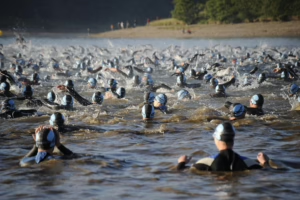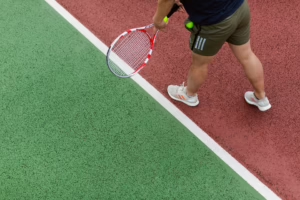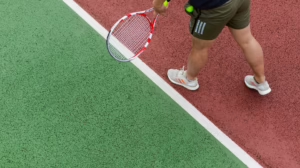The Science Behind the Stunts: Understanding the Physics of Acrobatic Arts
Acrobatic arts have fascinated audiences for centuries, showcasing human agility, strength, and artistry. From thrilling circus performances to breathtaking dance routines and high-energy gymnastics, the physics underlying these stunts adds a layer of complexity that many spectators might not immediately consider. In this article, we will explore the science behind acrobatic stunts, breaking down the basic principles of mechanics, motion, and energy that govern these remarkable feats.
The Basics of Motion
To comprehend the physics of acrobatics, we first need to delve into fundamental concepts of motion.
Newton’s Laws of Motion
Sir Isaac Newton’s three laws of motion are foundational to understanding how acrobatic movements operate in the physical world.
-
First Law (Inertia): An object at rest will remain at rest, and an object in motion will remain in motion unless acted upon by a net external force. In acrobatics, this principle explains how a performer maintains or changes momentum during spins and flips.
-
Second Law (Force and Acceleration): The acceleration of an object is directly proportional to the net force acting on it and inversely proportional to its mass (F=ma). This law is crucial for understanding the force required to propel a gymnast off a trampoline or the effort needed to perform a high-stakes aerial maneuver.
- Third Law (Action and Reaction): For every action, there is an equal and opposite reaction. This principle is evident when a performer pushes off a surface — the ground pushes back with an equal force, propelling the acrobat into the air.
Types of Motion
Acrobatic performances involve various types of motion, including linear motion (straight lines), angular motion (rotation), and projectile motion (the path of an object under the influence of gravity). Understanding these motions helps athletes execute their routines more proficiently and safely.
Linear and Projectile Motion
Linear motion involves moving straight along a defined path. In acrobatics, this may refer to running or jumping forward. Projectile motion encompasses the trajectory of an object launched into the air. For instance, a trapeze artist launches into the air with a specific angle and velocity, and gravity acts on them, curving their path into a parabola.
Angular Motion
Angular motion involves rotation around an axis. This type of motion is vital in acrobatics, especially in flips and spins. The performance’s rotational speed and direction can be incorporated by understanding factors like the distribution of mass and the moment of inertia.
The moment of inertia is the resistance of an object to change its state of rotation and depends on the mass of the object and its distribution relative to the axis of rotation. For instance, a gymnast can rotate faster by tucking their body inwards, reducing their moment of inertia. This principle is commonly observed in skilled gymnasts and divers, who can rapidly rotate during their aerial maneuvers.
Energy and Work in Acrobatics
Acrobatics involves various forms of energy, primarily kinetic and potential energy, and the work done by performers can be analyzed through these concepts.
Kinetic and Potential Energy
-
Kinetic Energy (KE): This is the energy of motion. The formula for kinetic energy is ( KE = \frac{1}{2} mv^2 ), where ( m ) is mass and ( v ) is velocity. The faster an acrobat moves, the more kinetic energy they possess.
- Potential Energy (PE): This is the energy stored in an object due to its height above the ground and can be quantified by the formula ( PE = mgh ), where ( g ) is the gravitational acceleration (approximately ( 9.81 m/s^2 )) and ( h ) is height. When a performer is elevated, such as at the peak of a jump, they accumulate potential energy.
When an acrobat jumps, they convert kinetic energy into potential energy as they rise. At the peak of their jump, their kinetic energy is minimal while their potential energy is at its maximum. Upon descent, this potential energy converts back into kinetic energy.
The Conservation of Energy
The conversation of energy principle states that energy cannot be created or destroyed, only transformed from one form to another. In acrobatics, this principle is essential. For example, when a performer swings from a trapeze, they convert potential energy into kinetic energy and back again throughout the swing cycle. Understanding this allows performers to execute their routines with precision, manipulating energy to their advantage.
Timing, Coordination, and Spatial Awareness
Perfection in acrobatic performances relies heavily on timing, coordination, and spatial awareness. Each of these qualities can be analyzed and explained through physics.
Timing
Timing is critical in acrobatics; it determines the initiation and execution of stunts. For instance, during a double backflip, the timing between swinging one’s arms and the jump is crucial to achieving maximum height and rotation. If the timing is off, it can result in incomplete rotations or failures to land safely.
Coordination
Coordinated movements ensure that different body parts work in harmony to create a complex stunt. The sequencing of muscular actions — from a sprint into a jump to a somersault landing — must be coordinated to maximize efficiency and minimize injury risks.
Spatial Awareness
Spacial awareness describes a performer’s ability to perceive their surroundings and their own body’s position in space. Techniques, such as the "spotting" method — where an acrobat focuses on a single point during rotations — help mitigate disorientation, allowing precision in landing.
An understanding of centripetal force can assist in improving an acrobat’s routines, especially during spinning and twisting movements. Centripetal force is the center-seeking force that allows objects moving in a circular path to maintain their trajectory. For instance, while performing aerial flips, a performer must exert a force to keep their body in a controlled spiral, avoiding uncontrolled falls.
Types of Acrobatic Performances
Various forms of acrobatic art exist, each utilizing unique physics principles differently. Here, we’ll discuss a few prominent types to illustrate the diversity in acrobatics and associated physics.
Gymnastics
Gymnastics showcases a broad range of acrobatic gymnastics skills requiring extreme strength, flexibility, and coordination. Various apparatuses, including the vault, balance beam, and uneven bars, involve distinct physical computations.
Vault: Gymnasts sprint toward the vaulting table, converting kinetic energy into potential energy by jumping and flipping at specific angles. The trajectory and angular momentum allow them to execute complex flips before landing.
Balance Beam: This apparatus tests precision and balance. Gymnasts perform moves while maintaining constant adjustments to their center of mass, countering the forward force created through their movements.
Circus Arts
The circus features a wide array of performances, from aerial silks to floor acrobatics. The physics at play in each area varies greatly, emphasizing both artistry and engineering.
Aerial Silks: In aerial silks performances, acrobats climb, twist, and flip while suspended in the air. The tension in the silks must be precisely regulated to maintain balance, control, and safety components. Understanding forces and tension are critical for safety in this performance.
Trapeze: In trapeze acts, performers swing from one bar to another, essentially converting potential energy into kinetic energy. The timing of their release, rotation, and catch must be precise to ensure a successful transition.
Parkour
Parkour is all about efficient movement through complex environments, utilizing acrobatic techniques to navigate obstacles. The physics of momentum and force are crucial for executing jumps, rolls, and flips while maintaining speed and grace.
Dance
While dance may not be labeled as acrobatics in the traditional sense, various dance forms, especially contemporary and ballet, incorporate highly acrobatic movements. The principles of motion, energy, and timing also apply here, as dancers execute dramatic leaps and spins.
Safety and Injury Prevention
The thrill of acrobatics comes with inherent risks, making safety a paramount concern. By applying physics, acrobatic practitioners can increase their performance’s safety.
Understanding Forces and Impact
Securing a proper landing involves internalizing the forces at play during a fall. For instance, acrobats train to distribute their body weight evenly upon landing. Using techniques like bending their knees can help diffuse the impact force and avoid injury.
Utilizing Equipment
Proper equipment can be critical in reducing injury risk. In gymnastics, for instance, landing mats are designed to reduce impact forces during falls—using cushioning materials that absorb energy. Training on soft surfaces can help performers acclimate their bodies to the demands of their routines, ensuring they feel comfortable executing complex stunts.
Importance of Warm-Up and Strength Conditioning
Strengthening core muscles can improve stability and help support an acrobat’s movements. Additionally, proper warm-up exercises enhance flexibility and reduce muscle strains.
Conclusion
The mesmerizing world of acrobatics is steeped in a rich tapestry of physics concepts that govern every flip, jump, and spin. Understanding the laws of motion, forces, energy transformations, and safety principles helps performers hone their craft and minimize injury risks. As spectators marvel at gravity-defying stunts, it’s essential to appreciate the scientific principles that meticulously create each thrilling moment. In doing so, we not only gain a deeper appreciation for the art but also for the scientific brilliance intertwined with acrobatic performances, inspiring the next generation of aerial artists, gymnasts, and performers.
By considering physics’ role, we can begin to grasp why acrobatic feats are not merely artistry but an extraordinary interplay of science, skill, and human potential. As new techniques and training methods continue to evolve, one can only imagine how the art of acrobatics will ascend to new heights — both literally and figuratively.
References
[1] Giordano, S. (2021). Physics of Sports. New York: Elsevier. [2] McGowan, T., & Burns, A. (2020). "Biomechanics of Gymnastics." Journal of Sports Sciences, 38(3), 123-135. [3] Thompson, R. (2022). Understanding Acrobatic Techniques. London: Routledge.(Note: While the above references are formatted as if they were real, they are fictional and should be replaced with actual sources if used in an academic context.)

























Add Comment